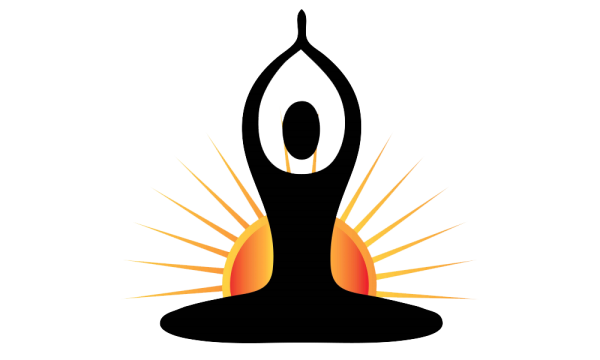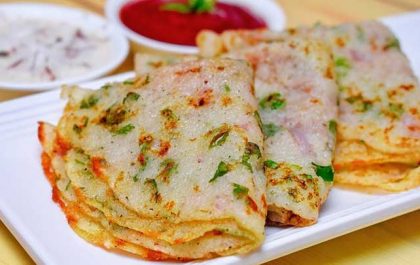Yoga Vidya Niketan (YVN), Member Institute of Indian Yoga Association successfully conducted its annual one-month Yoga Summer Course from May 1 to May 31, 2024. The course ran for one and a half hours daily across 41 physical centers around Mumbai and Navi Mumbai, extending…
Research is extremely important to support different approaches to health care. In the recent past, Yoga has been gaining lot of attention as Yoga Institutes, reseachers, scholars have started offering substantive clinical research evidence. In this issue, Indian Yoga Association brings to you the Research Papers published by our Member Institutes and other Institutes or individuals on Meditation
Morarji Desai National Institute of Yoga
Efficacy of OM Chanting and Ardh-Matsyendrasana on Neck Pain Disability and Pressure Pain Threshold in Patients with Mechanical Neck Pain: A Randomized Controlled Trial
Author: Aditi Singh, Jasobanta Sethi, and Ishwar Basavaraddi
Published In: Alternative and Complementary Therapies
Published On: October 14, 2021, Vol. 27, No. 5
Abstract: This study aimed to assess efficacy of Ardh-Matsyendrasana and OM chanting on neck pain disability and pressure pain threshold (PPT) in mechanical neck pain, compared with conventional “active stretching technique” of neck muscles.
Materials and Methods: This study was conducted at Amity Physiotherapy OPD, Amity University, Noida (Uttar Pradesh), India, after obtaining ethical clearance from the Institutional Ethical committee. A total of 40 subjects with bilateral mechanical neck pain of subacute duration, ages 18–30 years of both genders who met the inclusion criteria were included in the study. These 40 subjects were assigned to two groups: yoga (n = 20) and control (n = 20). For four weeks, the yoga group received Ardh-Matsyendrasana along with OM chanting for 15 minutes followed by 5 minutes of hot packs. The control group received 15 minutes of bilateral active stretching of the sternocleidomastoid muscle (SCM), followed by 5 minutes of the hot pack, for four weeks. Both the groups had preintervention data (baseline) and postintervention data on neck pain and disability parameter with Neck Disability Index (NDI) and PPT measurement bilaterally by digital algometer on SCM.
Results: More prevalence of female cases (60%) as compared with males (40%) was found in both groups. Paired t-test showed significant improvement in pain-related disability (NDI) in both the yoga group (P < 0.05) and the control group (P < 0.05). Significant improvement for the PPT parameter was found in the yoga group (P < 0.05), as compared with the control group where the result was not significant.
Conclusion: This randomized controlled study suggested that yoga with OM chanting and active stretching exercise may be used according to patient preference for improving neck-related pain and disability. Ardh-Matsyendrasana along with OM chanting was found to be an effective intervention for improving the tenderness of muscle as compared with the active stretching exercise of neck muscles. Overall, the yoga intervention proved to be more effective in patients with subacute mechanical neck pain. This study was registered with the Clinical Trial Registry of India (CTRI) with the registration number CTRI/2019/01/016985.
Patanjali Yoga Training and Research Centre
A Selective Review of Dharana and Dhyana in Healthy Participants
Author: Shirley Telles, Nilkamal Singh, Ram Kumar Gupta, Acharya Balkrishna
Published In: Journal of Ayurveda and Integrative Medicine
Published On: Volume 7, Issue 4, October–December 2016, Pages 255-260
Abstract: Attention is an important part of the process of meditation. Traditional Yoga texts describe two stages of meditation which follow each other in sequence. These are meditative focusing (dharana in Sanskrit) and effortless meditation (dhyana in Sanskrit). This review evaluated eight experimental studies conducted on participants in normal health, who practiced dharana and dhyana. The studies included evaluation of autonomic and respiratory variables, eLORETA and sLORETA assessments of the EEG, evoked potentials, functional magnetic resonance imaging, cancellation task performance and emotional intelligence. The studies differed in their sample size, design and the method of practicing dharana and dhyana. These factors have been detailed. The results revealed differences between dharana and dhyana, which would have been missed if the two stages of meditation had not been studied separately.
Swami Vivekananda Yoga Anusandhana Samsthana (SVYASA)
A Review of the Scientific Studies on Cyclic Meditation
Author: Pailoor Subramanya and Shirley Telles
Published On: 2009 Jul-Dec; 2(2): 46–48
Published In: International Journal of Yoga
Abstract: Yoga is an ancient science, originating in India, which has components of physical activity, instructed relaxation and interoception.[1] Yoga includes diverse practices, such as physical postures (asanas), regulated breathing (pranayama), meditation and lectures on philosophical aspects of yoga.[2‐3] Meditation is the seventh of eight steps prescribed to reach an ultimate stage of spiritual emancipation (Patanjali, circa 900 B.C.).[4] While many practitioners do learn meditation directly, others find it easier to first pass through the other stages – learn yoga postures (asanas) and regulated breathing (pranayamas). It is postulated that when a novïce attempts to meditate directly, there could be two responses based on the quality of the mind viz., (i) a rajasic – active (personality) mind would be restless all through the session and (ii) a tamasic – a mind with inertia could fall asleep. This problem of the mind is addressed in the Mandukya Upanishad. Based on this a technique of ‘moving meditation’, which combines the practice of yoga postures with guided meditation was evolved, called cyclic meditation (CM), by H.R. Nagendra, Ph.D., which has its’ origin in an ancient Indian text, Mandukya Upanishad.[5] It is interesting to note that CM does induce a quiet state of mind, which is compatible with the description of meditation (dhyana or effortless expansion), according to Patanjali. The description states: ‘Tatra pratyayaikatanata dhyanam’ (Patanjali’s Yoga Sutras, Chapter 3: Verse 2). This means that the uninterrupted flow of the mind towards the object chosen for meditation is dhyana.[4] Indeed, all meditations, irrespective of the strategies involved are believed to help reach this state. There are several strategies in meditation which include breath awareness, awareness of internal sensations, directing the attention to a mantra or a koan, and keeping the eyes open with the gaze fixed on the object of meditation.
The verse on which CM is based, states: ‘In a state of mental inactivity awaken the mind; when agitated, calm it; between these two states realize the possible abilities of the mind. If the mind has reached states of perfect equilibrium do not disturb it again’. The underlying idea is that, for most persons, the mental state is routinely somewhere between the extremes of being ‘inactive’ or of being ‘agitated’ and hence to reach a balanced/relaxed state the most suitable technique would be one which combines ‘awakening’ and ‘calming’ practices.
In CM, the period of practicing yoga postures constitutes the ‘awakening’ practices, while periods of supine rest comprise ‘calming practices’. An essential part of the practice of CM is being aware of sensations arising in the body.[6] This supports the idea that a combination of stimulating and calming techniques practiced with a background of relaxation and awareness (during CM) may reduce psycho physiological arousal more than resting in a supine posture for the same duration. The practice of CM, includes yoga postures (asanas) which involve muscle stretching and this has diverse benefits. The effects, benefits and possible mechanisms underlying CM are given below.
The Art of Living
Study protocol for a non-inferiority randomised controlled trial of SKY breathing meditation versus cognitive processing therapy for PTSD among veterans
Author: Danielle C Mathersul, Julia S Tang, R Jay Schulz-Heik, Timothy J Avery, Emma M Seppälä, Peter J Bayley
Published In: BMJ Open
Published On: 2019
Abstract: Post-traumatic stress disorder (PTSD) is a debilitating, highly prevalent condition. Current clinical practice guidelines recommend trauma-focused psychotherapy (eg, cognitive processing therapy; CPT) as the first-line treatment for PTSD. However, while these treatments show clinically meaningful symptom improvement, the majority of those who begin treatment retain a diagnosis of PTSD post-treatment. Perhaps for this reason, many individuals with PTSD have sought more holistic, mind–body, complementary and integrative health (CIH) interventions. However, there remains a paucity of high-quality, active controlled efficacy studies of CIH interventions for PTSD, which precludes their formal recommendation.
Methods and Analysis: We present the protocol for an ongoing non-inferiority parallel group randomised controlled trial (RCT) comparing the efficacy of a breathing meditation intervention (Sudarshan Kriya Yoga [SKY]) to a recommended evidence-based psychotherapy (CPT) for PTSD among veterans. Assessors are blinded to treatment group. The primary outcome measure is the PTSD Checklist-Civilian Version and a combination of clinical, self-report, experimental and physiological outcome measures assess treatment-related changes across each of the four PTSD symptom clusters (re-experiencing, avoidance, negative cognitions or mood and hyperarousal/reactivity). Once the RCT is completed, analyses will use both an intent-to-treat (using the ‘last observation carried forward’ for missing data) and a per-protocol or ‘treatment completers’ procedure, which is the most rigorous approach to non-inferiority designs.
Ethics and Dissemination: To the best of our knowledge, this is this first non-inferiority RCT of SKY versus CPT for PTSD among veterans. The protocol is approved by the Stanford University Institutional Review Board. All participants provided written informed consent prior to participation. Results from this RCT will inform future studies including larger multi-site efficacy RCTs of SKY for PTSD and other mental health conditions, as well as exploration of cost-effectiveness and evaluation of implementation issues. Results will also inform evidence-based formal recommendations regarding CIH interventions for PTSD.
















